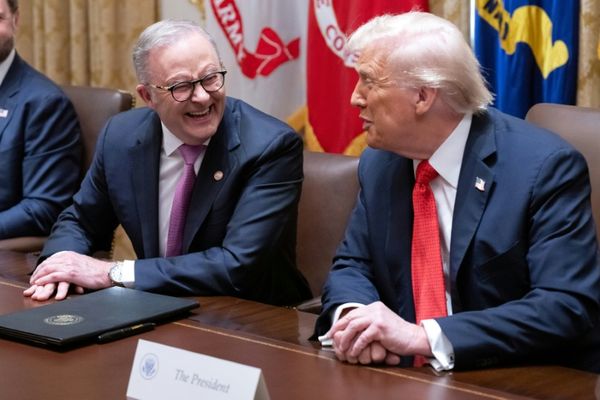
Good morning, Broadsheet readers! Peacock president is looking to capitalize on its Olympics success, Vice President Kamala Harris raised less money at the DNC than Donald Trump did at the RNC, and two founders are trying to disrupt a $34 billion industry for the next generation. Have a terrific Tuesday!
- Tween-ready. Plenty of brands have tried to innovate in the corporate-dominated menstrual products space, from 2010s direct-to-consumer darling Lola to spiral tampons Sequel to public spaces-focused Aunt Flow. Another one is Pinkie, a brand trying to become the go-to menstrual product for girls getting their periods for the first time.
Like other founders in the space, Fiona Simmonds (an ex-finance exec) and Sana Clegg (founder of a children's sleepwear brand) were shocked that the category hadn't seen much innovation in decades. They settled on a white space: fixing the problems they remember from getting their periods as girls, especially moments that felt embarrassing at the time. With five daughters between them, they saw that those problems hadn't gone away.

"We tried to solve all the things that we hated about the experience when we were young," Simmonds says. They designed their pads in smaller sizes than those sold for adult women, so wearing them didn't feel like "you just got off of a horse," Simmonds says. They wrapped the pads in loose-fitting packaging. "It doesn't sound a bag of chips when you're opening it in the bathroom," Clegg says. And that packaging closes at the top, allowing for more secure disposal of used products.
The idea of specialized pads for tweens has at least one trend on its side: Girls are getting their periods at younger ages, according to the Apple Women's Health Study published this year. Just as tweens are boosting sales at beauty giants such as Sephora, snapping up brands like e.l.f. and Drunk Elephant, they are now infiltrating the feminine hygiene aisle, too. Generation Alpha's total economic footprint will reach an estimated $5.4 trillion by 2029.
But Pinkie also faces some challenges. Conventional wisdom in the $34 billion global menstrual product industry is that most women—as high as 80%—stay loyal to whatever brand their mom or caregiver introduced them to. For a brand targeted to tweens and teens, it could be a challenge to bring customers along into adulthood and take market share from Tampax-maker Procter & Gamble or Playtex-manufacturer Edgewell. Pinkie hasn't started making tampons yet; that will be key to earning some of the category's high brand loyalty.

Simmonds and Clegg are mostly focused on the needs of tweens; the founders see Pinkie first as a puberty brand and are most interested in expanding into other products for this age group. They're targeting back-to-school season as a peak moment for the brand, which is distributed in some schools, sold on Amazon, and on shelves in 3,300 CVS locations.
"We have a consistent new user base coming in because every every day new girls are getting their periods," Clegg says.
Emma Hinchliffe
emma.hinchliffe@fortune.com
The Broadsheet is Fortune's newsletter for and about the world's most powerful women. Today's edition was curated by Nina Ajemian. Subscribe here.







